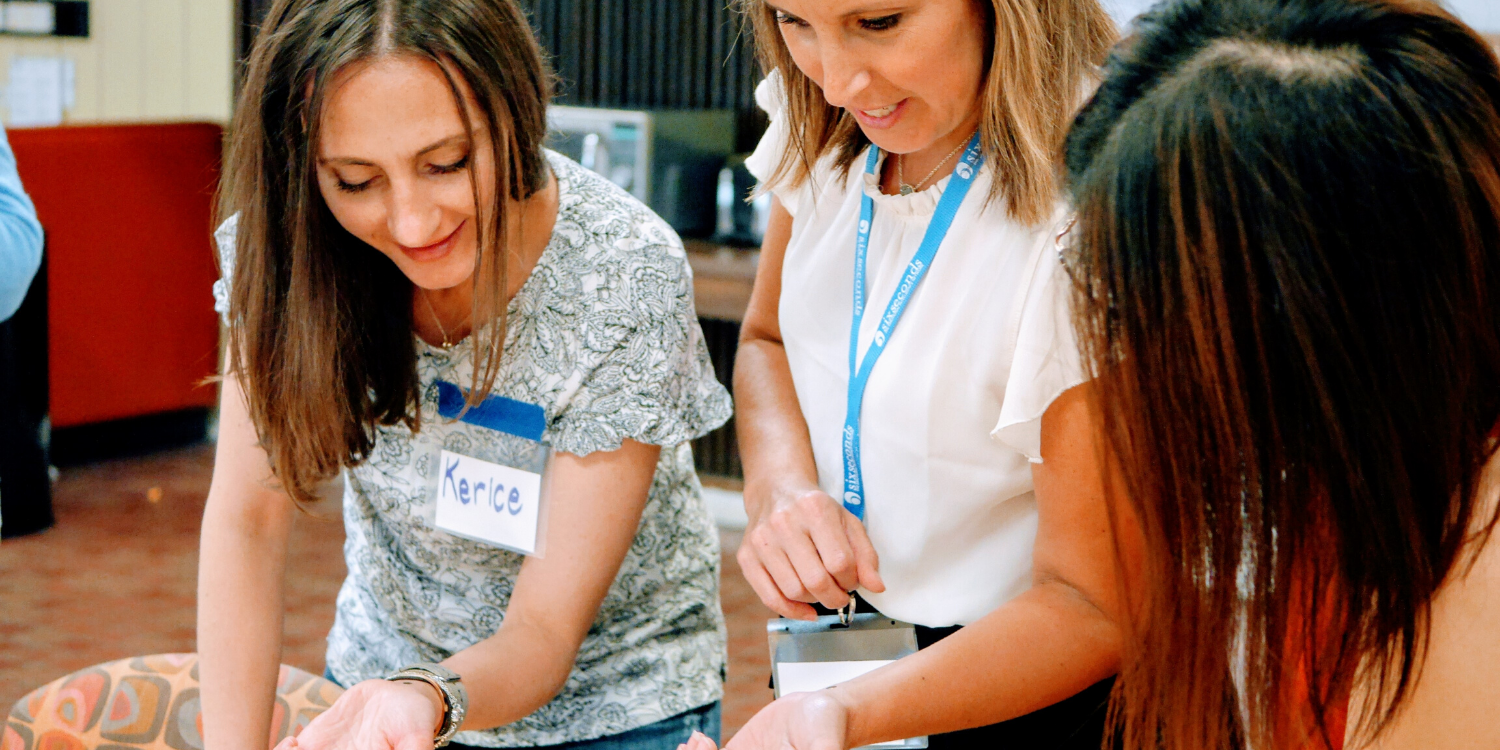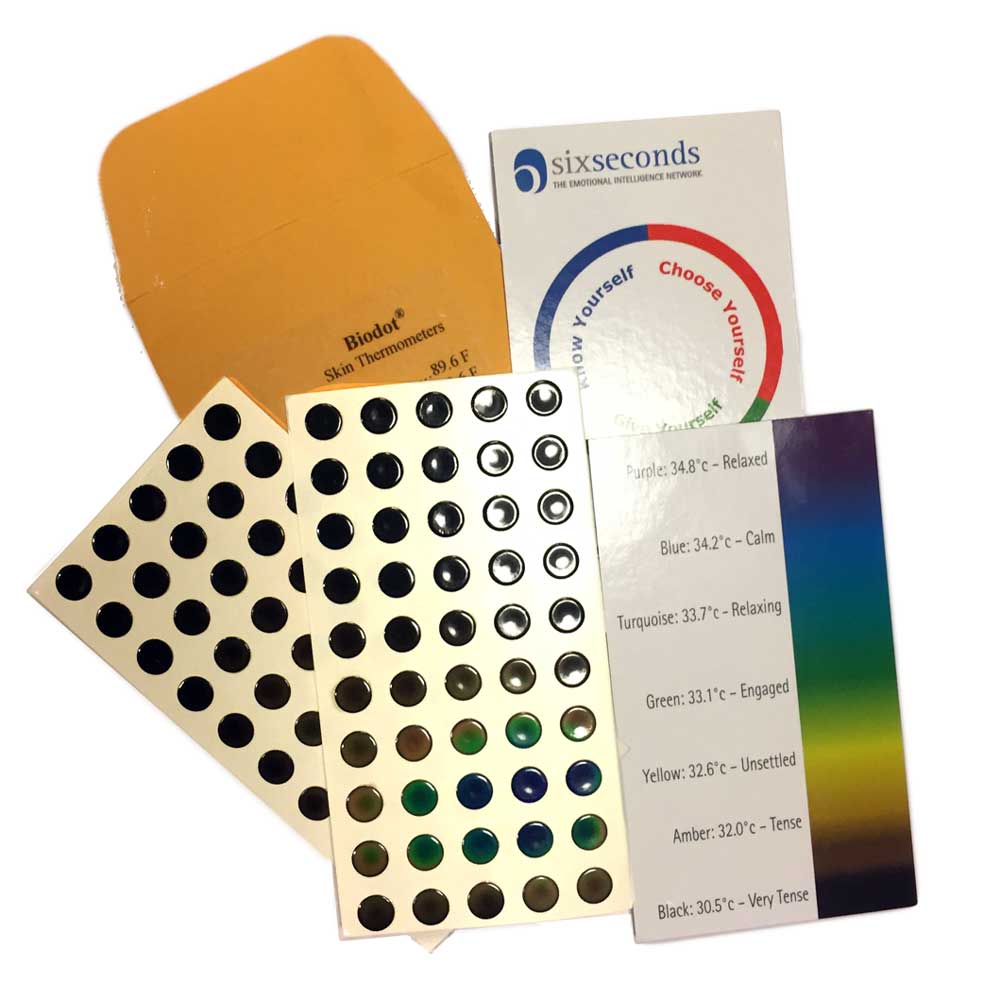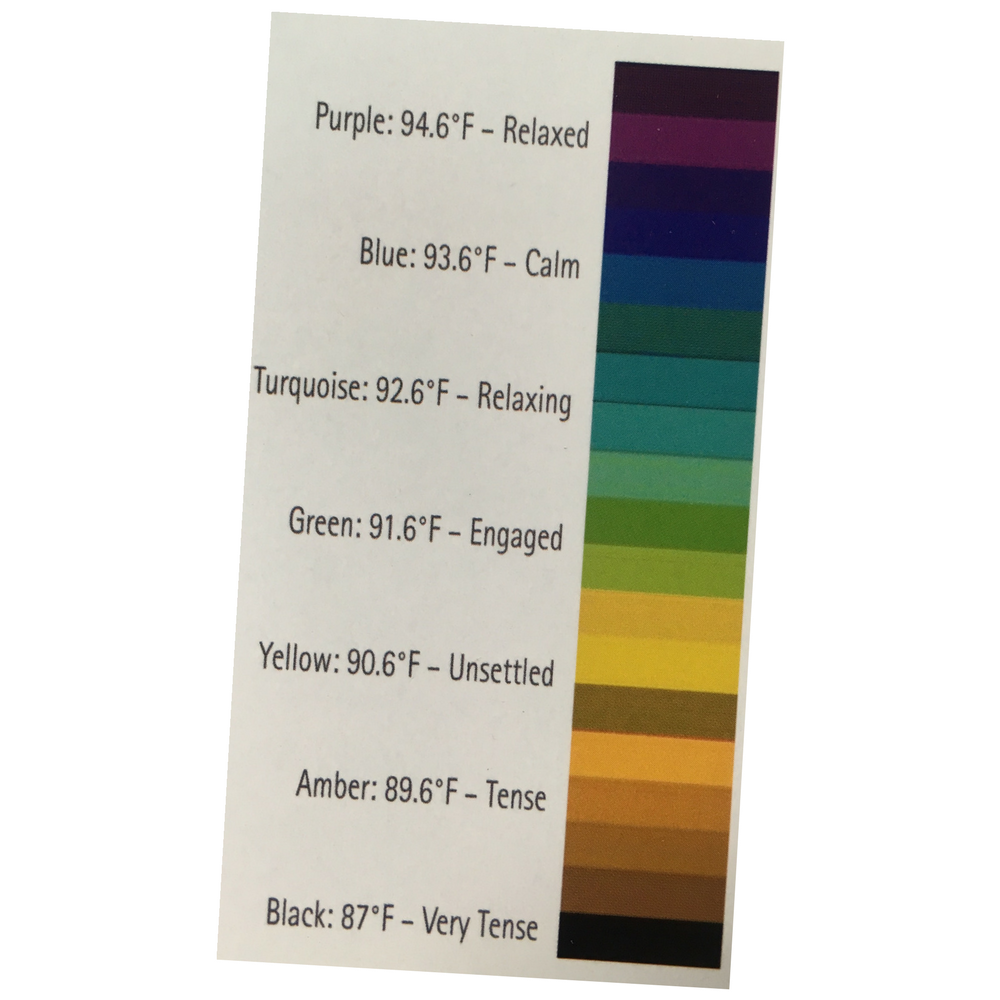What Are Biodots and How Do You Use Them with Clients to Enhance Training, Coaching, Meetings or Classes?
Biodots are a low-cost, easy way to help your clients become more self-aware. In this article, we’ll break down how they work and how you can use them to achieve 3 training objectives.
By Michael Miller – February 19th, 2020

Emotional self-awareness is a super power… but sometimes it’s hard to know what you’re feeling. Since emotions are connected to our physical responses, our bodies can give us clues. When we’re stressed, for example, our bodies automatically change the way blood flows, keeping more blood in our core areas and less on the surface… which reduces our skin temperature. This is an example of what some people call the “mind-body” connection — emotions and thoughts change our physical reactions! While these changes can be subtle, Biodots measure those temperature changes and give us real-time feedback.
In short, why use Biodots? They are a low-cost, easy way to help your clients become more self-aware. In this article, we’ll break down what Biodots are, how they work, and how you can use them to engage clients.
What Are Biodots?
Biodots are small dots that stick to your hand and reflect your body temperature as a spectrum of colors. Similar to the idea of a mood ring, except Biodots are scientifically calibrated.


How Do Biodots Work?
Skin temperature changes based on stress level. Biodots measure skin temperature. They change colors as your temperature changes – providing real time data to your stress level and how that is reflected in your physical body. The dots come with scale cards to interpret the different colors.
How to Use Biodots with Your Clients
At Six Seconds, we use Biodots in many of our courses to teach about emotional intelligence. Here are three examples:
Biodots to simplify neuroscience. Often when we present the physiological role of emotions, we explain why we’re called Six Seconds. Sometimes we share this quote from neuroscientist Antonio Damasio: “Emotions are embodied,” and then explain emotions affect every living cell in the human body to help us navigate life’s challenges and opportunities. Then we hand out Biodots to demonstrate this principle. Be careful though! Once you hand them out, people become very curious and want to play with their dots!
Biodots for emotional check-in. During a meeting or workshop, hand out Biodots and use them as a way for participants to gauge their present stress level, and keep tabs of their stress levels throughout the session or day. This works for both children and adults to increase self-awareness. For example, multiple times during your session, ask: “How many people have a dark blue Biodot?” “How many have a green dot?” etc. You can keep a scorecard on the whiteboard. Since green represents an optimal learning state, this is particularly useful if you want people engaged in content.
Use Biodots as a tool to practice relaxation and stress reduction. Biodots can help illustrate choice and control with emotional states. In a workshop or training, for example, pass out Biodots, then ask everyone to write or discuss a challenging or stressful topic, and then note down the color of their dots. Next, switch to taking deep breaths, increasing feelings of appreciation, and calming down (eg a mindfulness stress reduction exercise). Then ask them to note their dot-color. Discuss what changed and why.
How are you using Biodots in your training, coaching or teaching? Please share additional ideas in the comments!
What’s new in emotional intelligence?
Emotional Intelligence at Work: The Free, Easy Win Most Managers Are Missing
Gallup study compares the biggest gaps in employee vs. manager perceptions. What are managers’ worst blind spots? What are easy wins they could do better to improve team performance?
Is Boredom Bad for Kids? Emotional Intelligence Education News
Let’s unpack boredom and how emotional intelligence can help you with tips to support bored children (and keep your cool!). Keep reading for EQ research and resources you can use for you, your faculty and students.
Effective Emotional Intelligence Coaching: 4 Questions to Improve Client Outcomes with Social and Cultural Insights on Emotions
Improve your emotional intelligence coaching by understanding the social and cultural influences on emotions. Ask these 4 key questions for more effective client relationships
Krish and Anabel: SEL Pioneer and Mentee Share 6 Life Lessons on Empathy, Integrity, and Emotional Intelligence
What are 6 life lessons you’ve learned? Dr. Anabel Jensen, SEL pioneer and Six Seconds President, explores this important question with her 16-year-old mentee.
Voices from the Network: Jeremy Jensen
In this Voices from the Network, we sit down with Police Chief Jeremy Jensen, who is doing emotional intelligence training with his officers in Dubuque, Iowa.
Emotional Intelligence at Work: Is There Hope for Toxic Workplaces?
The remarkable transformation at Westcomm Pump offers a blueprint for turning around workplaces with depleted morale and trust issues, using the Team Vital Signs assessment.
- Pursue Noble Goals in the Six Seconds Model of EQ - July 29, 2023
- Increase Empathy in the Six Seconds Model of EQ - July 26, 2023
- Exercise Optimism - July 24, 2023







Hello, just found out about this product. I am a mental health counselor and I work with a lot of children so it seems like a fun way to measure stress levels for them. Also, I do EMDR work which requires my clients to be able to contact their emotions. As we look for trigger events, we measure the stress level to ascertain which events would potentially be the most effective for EMDR processing. One question that I do have is that if a person is a “cold” person, will they be as effective? You know, a person that always feels cold.
Hi Cynthia – they are thermometers so will read differently for someone whose baseline body temp is lower or who has circulatory challenges. Also some effect from ambient temp which can alter skin temp (super strong A/C for example). I usually tell people: if your body temp runs colder, try putting on your wrist instead.
—> in any case, extremity skin temp will vary w stress response, so should see some change.
Been following seconds for a while and it’s been interesting and this biodot can be used in the home( pointer to how parents ward relationship is) and in offices to know how conducive the work place is as well as ecological impacts working environment on staffs